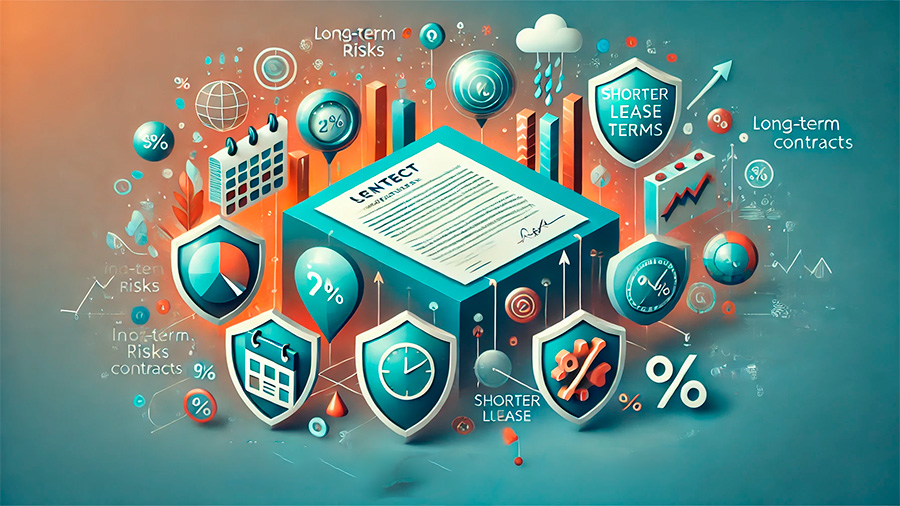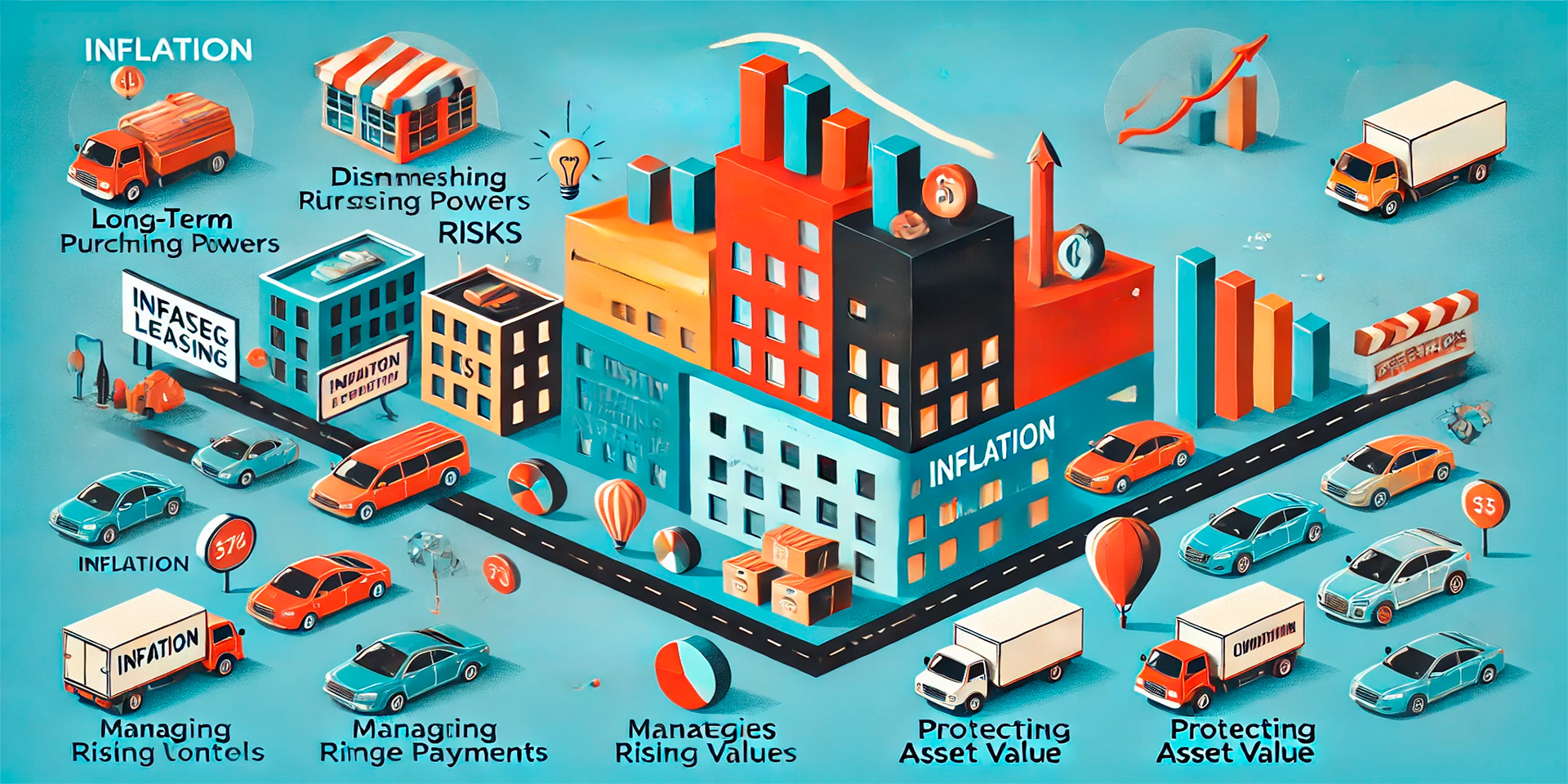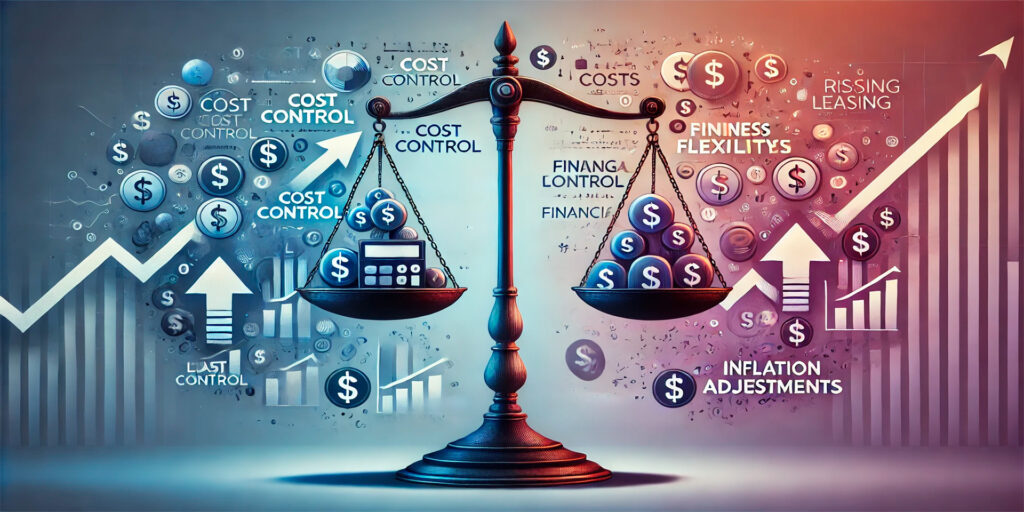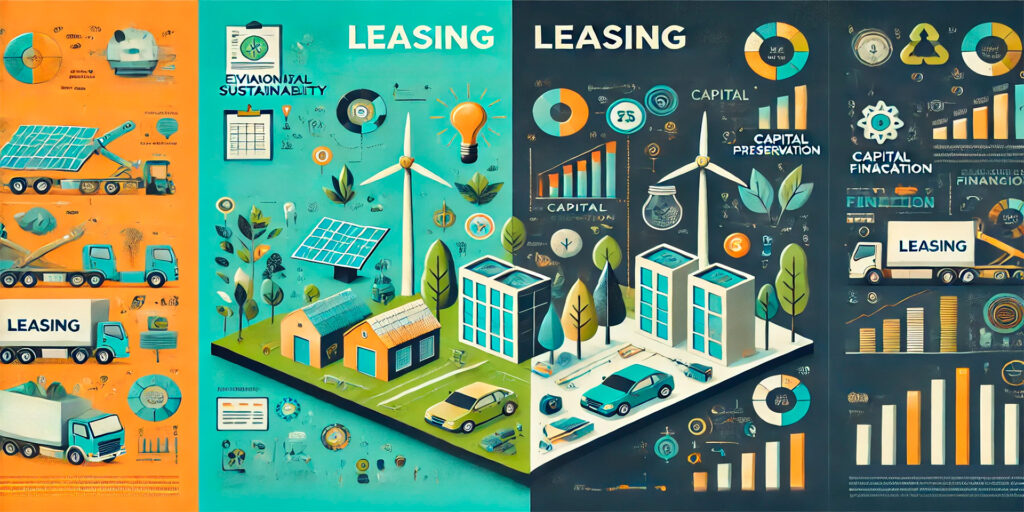Inflation is a key economic factor that can significantly affect long-term leasing contracts, particularly for businesses that rely on stable cost structures. As inflation rises, the purchasing power of money decreases, which can have direct implications on lease payments, asset values, and the overall financial planning of companies. For businesses with long-term leasing agreements, inflation can introduce both risks and opportunities. Understanding how inflation influences these contracts is essential for maintaining financial stability and planning for sustainable growth.
In this article, we explore the effects of inflation on long-term leasing contracts and discuss strategies businesses can use to protect themselves from inflationary pressures.
Rising Lease Costs Due to Inflation
One of the most immediate effects of inflation on long-term leasing contracts is the potential increase in lease costs. Lease agreements that include inflation-linked clauses, such as annual rent escalations or periodic adjustments based on the Consumer Price Index (CPI), can result in rising payments over time. These adjustments are designed to help lessors maintain the value of their assets in the face of inflation, but they can also impose significant financial burdens on lessees.
For example, a company leasing office space may find that its rent increases each year to keep pace with inflation. While this helps the lessor maintain consistent revenue, the business may face higher costs that could disrupt its cash flow or limit its ability to invest in other areas. Over the course of a long-term lease, these incremental increases can add up, making the contract more expensive than originally anticipated.
To protect against this risk, businesses should carefully review lease agreements for any inflation-linked provisions. In some cases, companies may be able to negotiate fixed lease terms or include caps on rent increases to limit their exposure to rising costs. Alternatively, businesses can explore shorter lease terms with renewal options to maintain flexibility in adjusting to inflationary trends.

Depreciation and Asset Value Concerns
Another way inflation impacts long-term leases is through asset depreciation and changes in asset values. For businesses that lease equipment, vehicles, or technology, inflation can affect both the current value of the leased assets and their residual value at the end of the lease term. As inflation drives up the costs of new equipment, older leased assets may lose value more rapidly, affecting the terms of the lease and any buyout options at the end of the contract.
In inflationary periods, lessors may seek to protect themselves by increasing lease rates or adjusting residual value calculations to account for the expected depreciation of the asset. This can make leasing more expensive for businesses, particularly if the lease terms do not reflect the accelerated depreciation caused by inflation.
To mitigate the impact of inflation on asset values, businesses should ensure that lease agreements are structured to account for potential changes in asset value over time. This could involve negotiating buyout options or renewal terms that reflect current market conditions, rather than relying on projections made when the lease was first signed. Additionally, companies should consider leasing agreements that allow for equipment upgrades or replacements during the lease term, ensuring they can access more valuable assets even as inflation affects market prices.
Impact on Operating Expenses
In addition to rising lease payments, inflation can also lead to higher operating expenses for businesses, especially when it comes to maintaining and insuring leased assets. As the cost of goods and services increases, so too do the costs associated with repairing, maintaining, and insuring leased equipment or property. Businesses may find that their overall cost of using leased assets rises as a result of inflation, even if the lease payments themselves remain stable.
For example, a company that leases a fleet of vehicles may face higher fuel, maintenance, and insurance costs during periods of inflation. These increases can erode the financial benefits of leasing and make it more expensive to operate the business over time. Similarly, businesses that lease commercial properties may experience rising utility bills, property taxes, and insurance premiums, all of which can impact profitability.
To protect against inflation-driven increases in operating expenses, businesses should factor these costs into their long-term financial planning. This may involve negotiating service agreements or maintenance contracts that lock in prices for the duration of the lease, or seeking out energy-efficient equipment and buildings that help mitigate rising utility costs. By managing operating expenses proactively, businesses can reduce the financial strain caused by inflation.

Protecting Against Inflationary Risks
There are several strategies businesses can use to protect themselves against the risks associated with inflation in long-term leasing contracts. One approach is to negotiate inflation caps or fixed payment schedules that limit the extent to which lease payments can rise over time. By including clauses that cap rent or payment increases, businesses can ensure they are not subject to steep annual escalations that may become unmanageable in high inflation environments.
Another strategy is to opt for shorter lease terms with renewal options. This approach provides businesses with the flexibility to renegotiate lease terms based on current market conditions, rather than being locked into a long-term contract that may not be favorable as inflation rises. Businesses can also build renewal clauses into their leases that allow for renegotiation of payment terms or asset replacement if inflation exceeds a certain threshold.
Finally, businesses should consider including provisions in their lease agreements that allow for equipment or asset upgrades during the lease term. This ensures that companies can access newer, more valuable assets even as inflation affects market prices. Having the flexibility to upgrade assets can help businesses stay competitive and mitigate the impact of inflation on their long-term growth plans.
Conclusion
Inflation can have far-reaching effects on long-term leasing contracts, influencing lease payments, asset values, and operating expenses. For businesses, understanding how inflation impacts these contracts and taking proactive steps to mitigate risks is essential for maintaining financial stability and supporting sustainable growth. By negotiating flexible lease terms, managing operating costs, and planning for inflationary trends, companies can protect themselves from the challenges of inflation while continuing to leverage leasing as a valuable financial tool.



